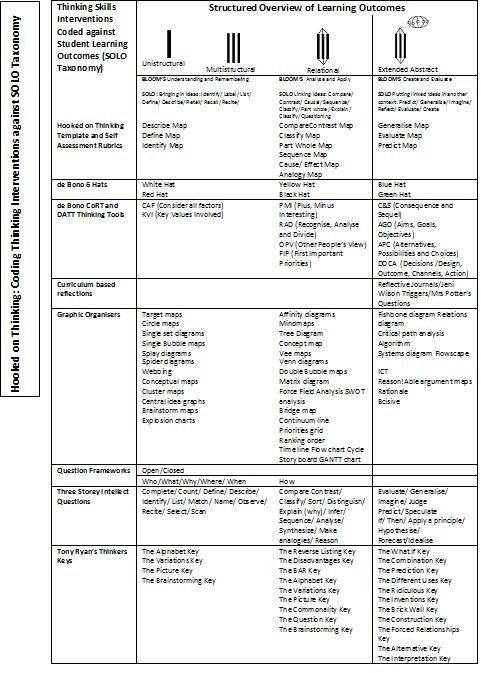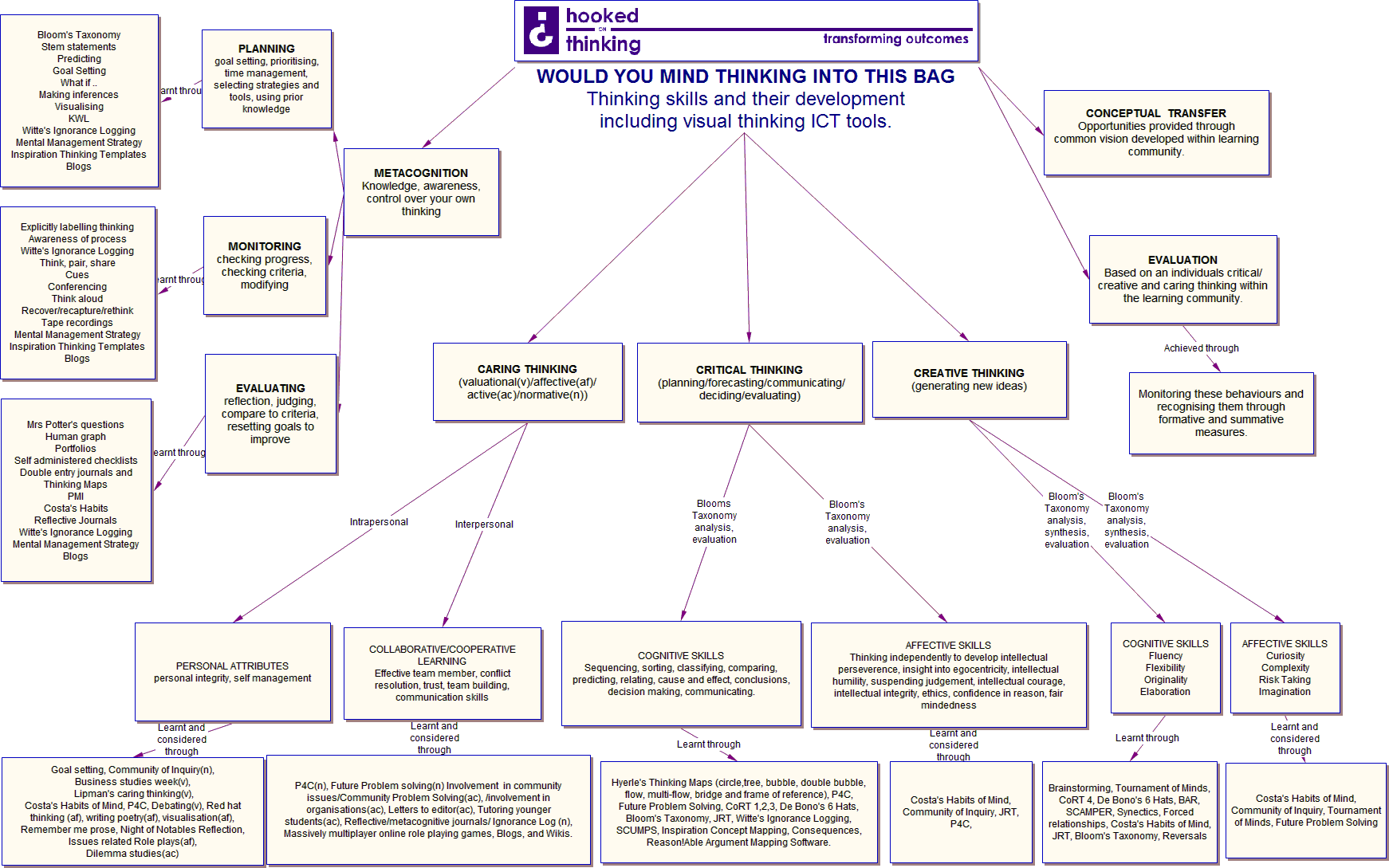Thinking interventions
Thinking Interventions coded against student learning outcomes (SOLO Taxonomy)
When schools create a “thinking toolbox” of skills and dispositions, they are teaching for the knowing of thinking, rather than the understanding of thinking. To teach for understanding of thinking, schools must create World 3 learning environments where thinking can be analysed and improved, and where pedagogies for reflection, pattern recognition, and connection, are encouraged.
Developing a thinking toolbox curriculum based around a common language for talking about thinking processes in learning is made easier when schools, teachers, and, more significantly, students, adopt a learning process approach to developing a thinking curriculum.
The framework shown below identifies World 2 thinking strategies that align with the differing complexities of thinking in the learning process, rather than strategies that align with creative, critical, and caring thinking. This alignment of thinking processes in learning allows schools and students to develop a common language for assessing thinking processes, and their learning context, against student learning outcomes in the Structure of Observed Learning Outcome (SOLO) model (Hattie & Purdie, 1998) and the National Certificate of Educational Achievement (NCEA).
It also enables both teachers and students to identify the thinking strategy that is the most appropriate intervention, and to use this to clearly target support for the appropriate student learning outcome.
HOT Presentation - Downloadable pdf.

File:HOT SOLO Coded Thinking Interventions.pdf

Schools sometimes introduce a developmental sequence for the introduction of thinking skills and strategies based on the perceived ease of the strategies themselves. The weakness in this approach is that the focus is on the shrink wrapped package rather than the intended learning outcome. Rather than creating an overview that states in Y1 and 2 all student will learn how to use X and Y Strategy and in Y3 and 4 all students will learn how to use A and B strategy etc it would seem smarter for schools to create an overview based on intended learning outcomes.
A better approach is to classify strategies into creative, caring and critical thinking, and then suggesting all Y1 and Y2 students learn a strategy to enhance creative thinking outcomes, a strategy to enhance caring thing outcomes and a strategy to enhance critical thinking outcomes, and Y3 1nd 4 students learn etc. Example below.
However, a more powerful approach is to think about the strategies in term of intended learning outcomes. Creating expectations in terms of support for an intended learning outcome. For example, In Y1 and 2 students will learn how to use [insert a number] of thinking strategies that help them bring in knowledge and information (Multistructural) , [insert a number] of thinking strategies that connect knowledge and information (Relational) and [insert a number] of thinking strategies that help them look at knowledge and information in a new way (Extended abstract). In Year 3 and 4 students will etc
| ||||||||||||||||||||||||||||||||||||
Copyright © Hooked on Thinking. Pam Hook and Julie Mills, 2004 to 2011. All rights reserved.
Unless clearly stated otherwise, copyright material contained on this site is the intellectual property of Hooked on Thinking, Pam Hook and Julie Mills.
You may not use this work for commercial purposes. You may not alter, transform, or build upon this work without the written permission of the rights owner.


